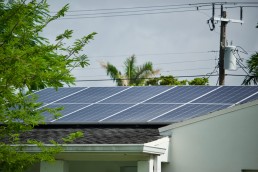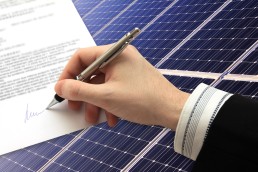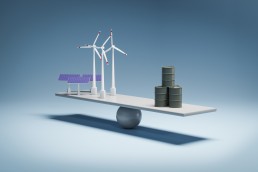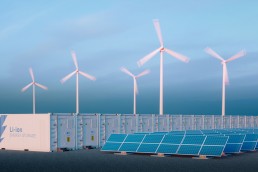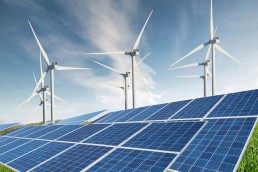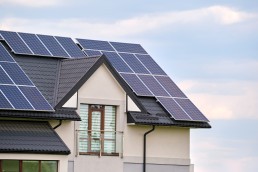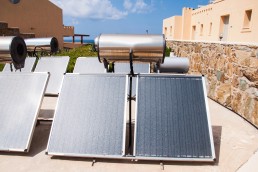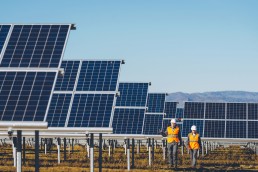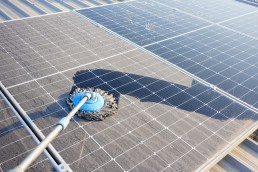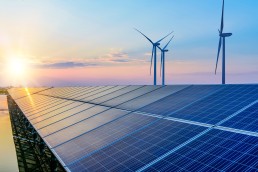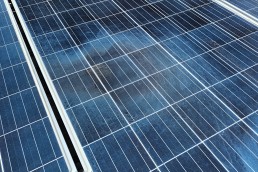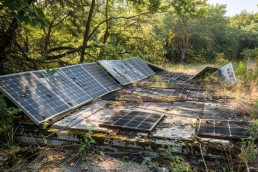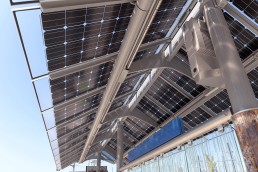Intersolar Europe 2023 was a blast for PVcase. Its Bauhaus-styled yellow booth was always crowded, and the new tools attracted enormous attention. Highly successful participation also marked our first collaboration with the recently acquired Anderson Optimization company, whose team also participated in the trade show along with PVcase.
The Intersolar trade show and the conference took place from the 13th to 16th of June in Munich, Germany, and attracted all the major solar market players from all across the globe. In addition to this, PVcase also organized its own customer education seminar, SmartUp’23, that took place just before Intersolar. Moreover, our R&D specialist Algirdas Ducinskas delivered a presentation on digital twin technology called “Utility-Scale Solar Power II: Quality, Reliability & Performance.”
Let’s explore the key highlights of our team’s experiences at Intersolar.
PVcase at Intersolar
The Intersolar attendance record was hit again. Last year the organizers expected 60000, but they got 75000 guests. This year, they expected 850000, while 100,000 visitors participated in the show. As usual, PVcase socks were among the most sought merch items.
Intersolar 2023 will bring PVcase an influx of new customers and make the brand even more visible. Povilas Sumskas, PVcase’s Head of Outbound, said: “We had expected the show to be busy, but we couldn’t imagine it would be that busy. It was so swamped that those three days were buzzing. Usually, when we go to conferences, we see the changes throughout different parts of the day. But now, it was consistently hectic throughout the day, and people were also very interested in our booth design. It proved to be the ideal time and place for us to showcase our product.”
Povilas also highlighted the tremendous interest sparked by PVcase’s soon-to-be-launched Roof Mount and Yield tools, as well as Anderson Optimization integration.
Volha Vziatkina, PVcase’s Marketing Events Manager, was also very positive: “Given last year’s experience, we expected our booth to be jam-packed. But the busy we imagined, and the busy we actually had was next level. I don’t think I ever saw a single person not having a conversation, not giving a demo. At some point, we saw 27 demos or conversations within the booth. So literally every corner, every station, and every person was busy. Our booth also left a lasting impression on people, who were fascinated and even took photos.”
Key takeaways from the conference
Get a glimpse into the Intersolar conference through the lens of PVcase’s market insights team, who have gathered several important takeaways.
Global solar market and long-term outlook
– According to SolarPower Europe (SPE), 239 GW of solar were grid-connected globally in 2022 (45% year-over-year growth). This is lower than the 252 GW estimated by BNEF. 2022 was characterized by the stabilization of supply chains and an energy crisis. Moreover, many discover solar as a hedge against soaring energy prices.
– Under its Medium scenario, SPE expects solar installations to grow to 341 GW by 2023 (while BNEF numbers are 344 GW) and reach 615 by 2027 (BNEF — 529 GW). The high scenario could see almost 800 GW installed in 2027 (BNEF — 570 GW).
– Research community sees between 14 and 80 TW by 2050, up from 1.2 TW at the end of 2022. The most likely scenario is between 60 and 80 TW by 2050, while the 2030s expect a 3.7 TW annual market.
Hybrid projects
– A conference session showcased 18 concrete hybrid projects (1 hydro-floating, 13 solar with battery energy storage system (BESS), two solar-wind, one solar-wind with BESS, and one agrivoltaic with BESS).
Hybrid market outlook
– Colocating renewable energy (RE) and BESS could become the new normal across all markets.
– Near 30% renewable energy injection could be perfect for rolling out hybrid PV+BESS.
– Cumulative front-of-the-meter battery plants are expected to grow from about 50 GWh in 2023 to 300 GWh in 2031.
Advantages of hybrid projects
– Provision of ancillary Services and short-term (< 1h) stability.
– Improved participation in Spot market Trading – hourly equalization of demand and supply
‘PV + battery revenue stacking.
– Optimized grid connections, increased RE technology mix in the power system, and integration of more variable RE through storage.
– Operational advantages such as firmer output, reduced O&M cost, and higher capacity factor.
– The reduction of curtailment.
Agrivoltaics
– Launch of V2 of the Agrisolar Best Practice Guidelines.
– Agri-PV installed on 10% of the EU’s Utilised Agricultural Area (UAA) could reach an installed capacity between 3 and 14 TWp. However, there is still no aggregate data on the size of the agrivoltaic market, neither in Europe nor the world.
Summary
Overall, Intersolar Europe 2023 was another major leap for PVcase. Our Bauhaus-styled pavilion attracted many different people from the industry that were interested in the demos of our products. Moreover, the trade show left a positive impact and provided the company with new possibilities for growth in the global solar market. We’ll work hard to return even bigger next year.
Feel free to share your ideas with us for our next year’s Intersolar edition.
You might also be interested in:
October 10, 2024
Net energy metering: how does it work and what are the benefits?
Learn about net metering, how it works and its benefits for renewable energy users and the grid.
October 9, 2024
Solar lease vs. buy: which is better?
Explore the benefits and drawbacks of leasing or owning solar panels to determine the best option for your renewable energy needs.
October 8, 2024
Solar energy vs. fossil fuels: what’s the difference?
Want to understand the differences between solar energy and fossil fuels? Explore the pros and cons, including their environmental impacts and financial considerations.
October 7, 2024
Is solar power truly renewable or nonrenewable?
Discover whether solar energy is considered renewable or nonrenewable and explore the benefits of solar power for a sustainable future.
October 6, 2024
Understanding on-grid solar systems. Powering homes and businesses
Find out how grid-tied solar systems work, their advantages and why they're popular for homeowners and businesses looking to harness solar energy efficiently.
October 4, 2024
Solar energy vs. wind energy. Pros and cons
Discover whether solar energy is considered renewable or nonrenewable and explore the benefits of solar power for a sustainable future.
October 3, 2024
Achieving household energy independence
Discover how energy independence through solar power can benefit your household, reduce costs, and contribute to a sustainable future.
October 2, 2024
Solar powered water heaters. A comprehensive guide to their value and efficiency
Many people in rural areas have difficulty accessing financial services, a problem exacerbated by energy insecurity. Solar power can help protect rural communities from energy…
October 1, 2024
Separating solar energy facts from fiction
Explore common solar energy myths and facts. Learn the truth about the efficiency, costs, and environmental impact of solar power in this guide.
September 30, 2024
Essential solar panel maintenance for peak performance
Learn key strategies for solar panel upkeep, from regular cleaning to performance monitoring. Maximize efficiency and extend system life.
September 27, 2024
Understanding smart power grid technology
Discover how smart grids modernize power systems, enhance efficiency and integrate renewable energy sources for a sustainable future.
September 26, 2024
Why do solar panels degrade?
How and why do solar panels degrade? Explore the factors contributing to their lifespan and what measures to take to extend it.
September 25, 2024
Solar panel and battery recycling
Learn effective techniques for recycling solar panels and batteries. Discover sustainable practices, legal requirements, and the environmental impact of proper disposal methods.
September 24, 2024
Will urban air transportation become widely available?
Learn about the latest innovations and practices that can further improve the sustainability of climate-resilient crops, benefiting both farmers and the environment.
September 23, 2024
Emerging innovations in unmanned systems
Unmanned systems can perform various tasks without the hands-on operation of a human, although they’re often operated remotely. These systems are increasingly being used in…

